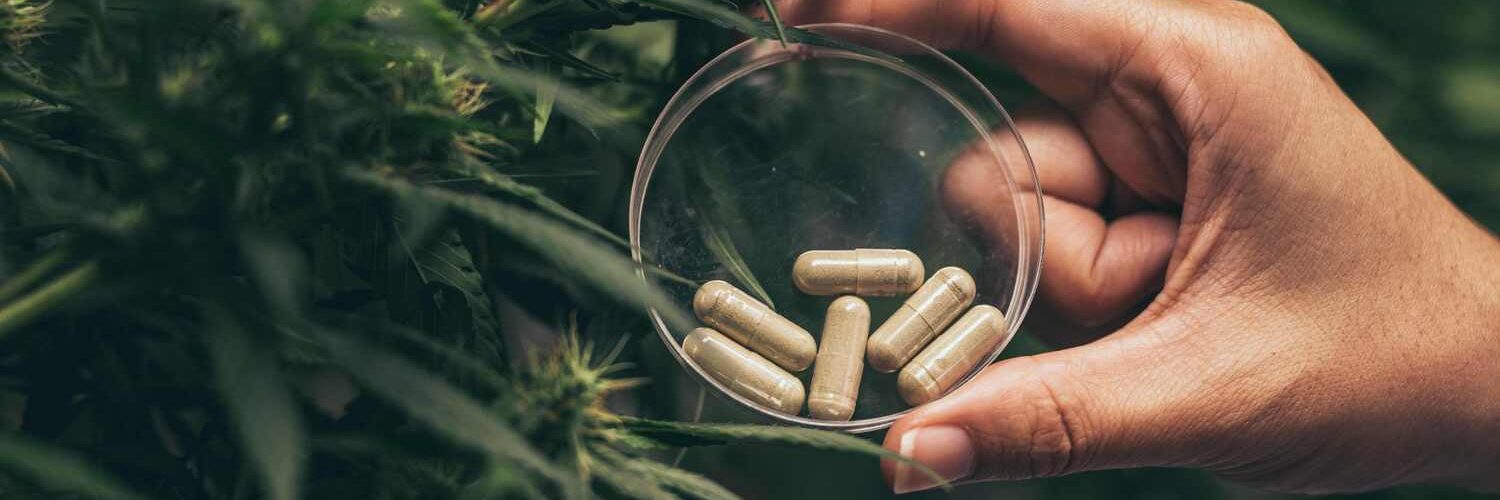Does Weed Help Glaucoma?
- John DiBella
- Published: July 20, 2020
- Updated: January 18, 2024
- Fact-checked by Dr. Desiree Granados

Glaucoma, a condition characterized by increased pressure in the eye, poses significant risks to patients’ vision. Traditional treatments offer varying degrees of efficacy and often come with unwanted side effects. In clinicians and researchers’ quest for alternative treatments, one candidate that has emerged in recent years is cannabis.
Let’s explore the evidence, unpack the research, and shed light on whether cannabis can offer relief for glaucoma patients.
What Is Glaucoma and What Are the Symptoms?
Glaucoma is a chronic, progressive eye disease that causes optic nerve damage that often leads to vision loss or blindness. It primarily occurs due to an increase in pressure within the eye, known as intraocular pressure. However, this disease can also occur without intraocular pressure.
Symptoms of glaucoma vary depending on the type and stage of the condition. In its early stages, glaucoma may present no symptoms and not become noticeable until the disease progresses to an advanced stage.
Chronic open-angle glaucoma, the most common type of glaucoma, often presents no early symptoms. But as the disease progresses, it can cause gradual vision loss that first affects peripheral vision, then central vision. If left untreated, it can eventually lead to blindness.
Acute angle-closure glaucoma, a severe form of the disease, can present sudden symptoms such as severe eye pain, nausea, vomiting, blurred vision, and seeing halos around lights. This form of glaucoma requires immediate medical attention to prevent permanent vision loss.
Can Medical Marijuana Treat Glaucoma?
Medical marijuana has been recognized for its potential to lower intraocular pressure (IOP), a key contributing factor in glaucoma. This reduction in IOP can potentially alleviate the symptoms of glaucoma. However, the effect is temporary, lasting only three to four hours per dose. Therefore, frequent cannabis usage throughout the day would be necessary to maintain low IOP.
Moreover, other pharmaceutical treatments for glaucoma are currently more effective and have less potential for side effects. It’s also important to note that prolonged use of marijuana has potential side effects, including respiratory issues and cognitive impairment. Therefore, while medical marijuana can offer temporary relief, it is not currently recommended as a primary treatment option for glaucoma.

What Are the Risks of Using Cannabis for Glaucoma?
While cannabis has been known to decrease intraocular pressure (IOP), its use for this purpose does carry several risks:
- First, the effect of cannabis on IOP is short-term, which means it would need to be consumed every few hours to maintain a reduction in pressure. This frequent use can lead to significant health and lifestyle implications such as impaired cognitive function and/or substance addiction.
- Smoking cannabis can have adverse effects on lung health, presenting a risk for those with respiratory issues.
- Cannabis can cause tachycardia and decreased blood pressure, which can reduce blood flow to an already compromised optic nerve, potentially damaging it further.
These risks should be seriously considered and discussed with a healthcare professional before you use cannabis to treat glaucoma.
Why Choose the Sanctuary?
When you partner with the Sanctuary Wellness Institute, we connect you with a state-certified physician qualified to recommend medical marijuana treatment. Then our team guides you through the process of obtaining a medical marijuana card to save you time and take the stress out of the experience.
Our intimate understanding of the MMJ card application process in your state enables us to streamline it for you and help you get your card as quickly as possible. Most importantly, the Sanctuary provides comprehensive support to simplify your path to relief.
States Where We Offer Medical Marijuana Card Services
How we reviewed this article:
- Mona Kaleem (2024). Glaucoma
https://www.hopkinsmedicine.org/health/conditions-and-diseases/glaucoma - NHS (2024). Glaucoma
https://www.nhs.uk/conditions/glaucoma/ - Katarina (2023). Is Marijuana a Treatment for Glaucoma?
https://ophthalmology.wustl.edu/is-marijuana-a-treatment-for-glaucoma/ - Dan Gudgel and David Turbet (2023). Does Marijuana Help Treat Glaucoma or Other Eye Conditions?
https://www.aao.org/eye-health/tips-prevention/medical-marijuana-glaucoma-treament - Thomas A. Graul (2018). Marijuana and Glaucoma
https://glaucomatoday.com/articles/2018-mar-apr/marijuana-and-glaucoma
Current Version
January 18, 2024
Updated By
Jake Peter
Fact-checked By
Dr. Desiree Granados
Editorial Process
Our Editorial Process
First Published
July 20, 2020
Written By
John DiBella
Fact-checked By
Dr. Desiree Granados
Editorial Process
Our Editorial Process
Other Posts About Medical Marijuana Treatment

John DiBella is the co-founder and CEO at The Sanctuary Wellness Institute. His goal is to foster healthier lifestyles to improve individuals’ quality of life and health span through online medical and non-medical services. When he’s not writing health & wellness articles for The Sanctuary, he enjoys hiking, camping, surfing and sailing.







